- English
- Español
- Português
- русский
- Français
- 日本語
- Deutsch
- tiếng Việt
- Italiano
- Nederlands
- ภาษาไทย
- Polski
- 한국어
- Svenska
- magyar
- Malay
- বাংলা ভাষার
- Dansk
- Suomi
- हिन्दी
- Pilipino
- Türkçe
- Gaeilge
- العربية
- Indonesia
- Norsk
- تمل
- český
- ελληνικά
- український
- Javanese
- فارسی
- தமிழ்
- తెలుగు
- नेपाली
- Burmese
- български
- ລາວ
- Latine
- Қазақша
- Euskal
- Azərbaycan
- Slovenský jazyk
- Македонски
- Lietuvos
- Eesti Keel
- Română
- Slovenski
- मराठी
- Srpski језик
How does fast charging of electric vehicles affect battery health?
2024-06-27
Frequent fast charging of electric vehicles can lead to battery aging. Based on laboratory experiments and an in-depth understanding of lithium-ion battery aging, scientists have long known that frequent high-voltage charging accelerates battery degradation and range loss. But how to translate laboratory science into lithium-ion battery packs for electric vehicles?
Recurrent studied the fast charging of 13,000 Tesla on U.S. roads and expected to see that, statistically, most fast-charging cars have shorter range and more degradation than cars that don't fast charge often.
We believe we will see something like this.
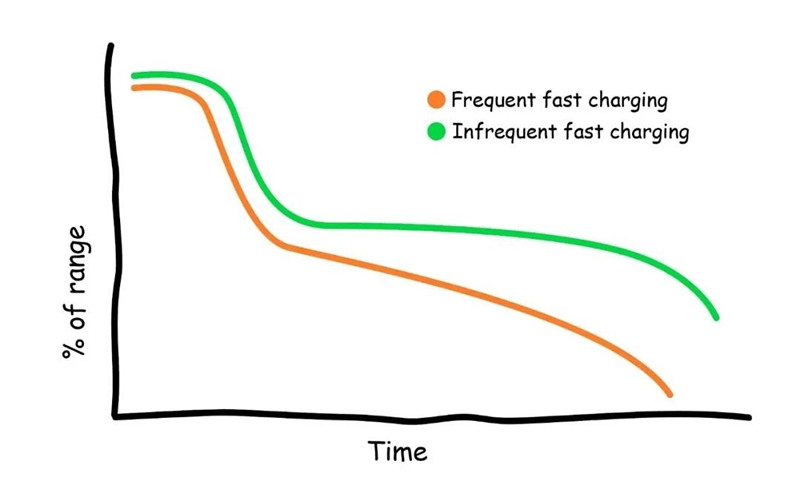
Instead, to our surprise, our analysis of more than 160,000 data points found no statistically significant difference in range decay between fast charging more than 70% of the time and fast charging less than 30% of the time. At least not yet.
In the chart below, the blue curve shows the range of observation for cars with less than 30% fast charging time, one standard deviation above the average, and one standard deviation below the average. The orange curve shows the same but for cars with at least 70% fast charging. Fast charging did not have the negative impact we expected.
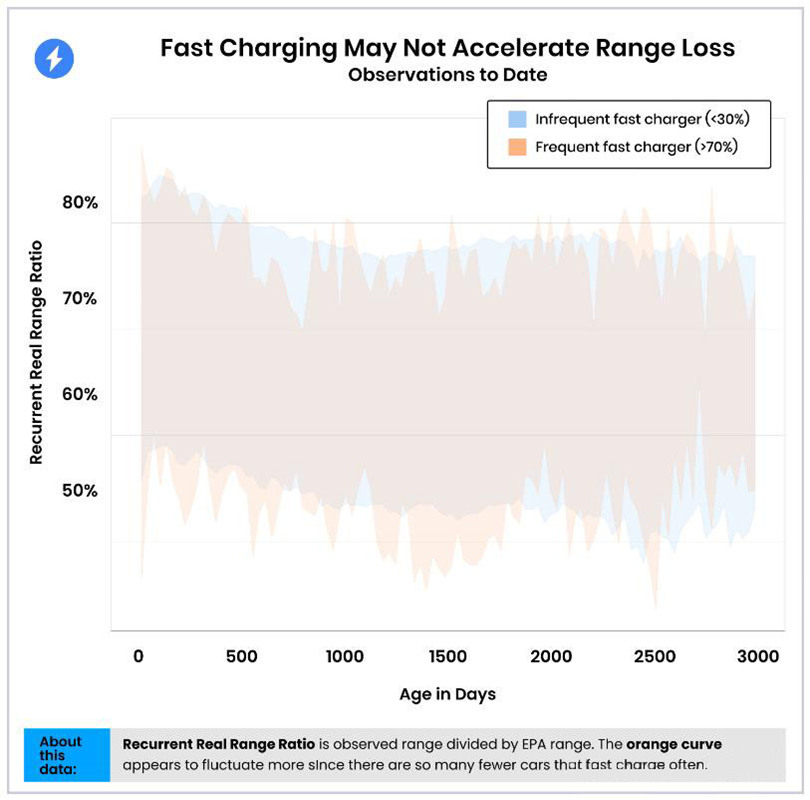
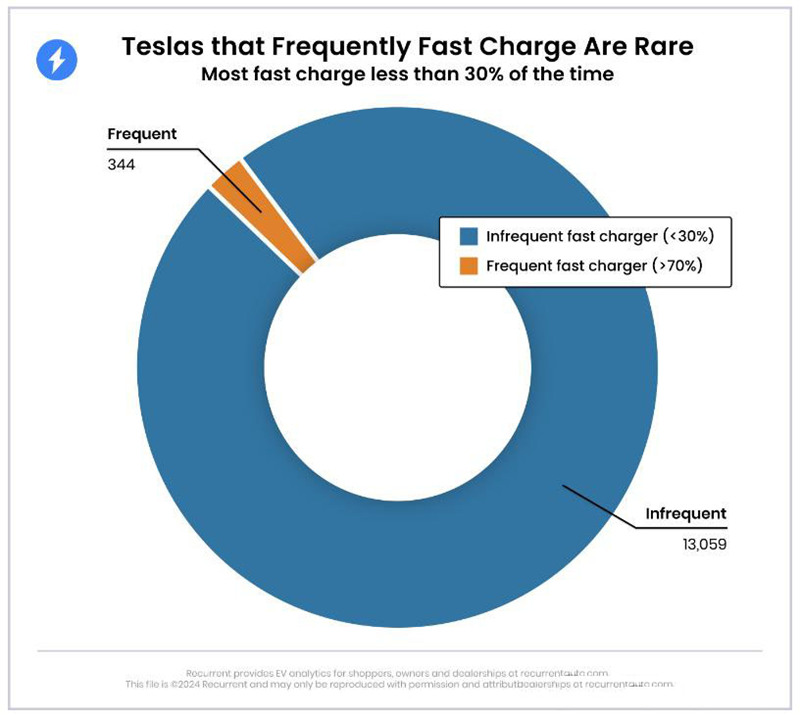
Is the aging of electric vehicle batteries a factor?
Our data looks at model years from 2012 to 2023, but 90% of vehicles are from 2018 or later and 57% from 2021 or later. The data is heavily skewed towards new cars. We are looking at the effect of fast charging over 5-6 years. We don't know if there will be a cumulative effect in the future of these batteries.
In addition, we don't have historical charging data for older cars, so we don't know if their range has been affected.

One thing we do see is that over time, the range of all Tesla batteries - both fast and non-fast - decreases. And that's okay! Lithium-ion batteries do degrade over time with use. In the chart below, you can see similar degrees of range loss for two different values:
1. The scope of the dashboard, or what the driver sees in their car
2. True range, a cyclic value based on observations, taking into account factors such as terrain and weather.
Just like the graph above, a larger standard deviation band of the true range indicates more variability in the number. We expected this because Tesla typically tightly controls the range of the dashboard to provide a consistent experience for the driver.
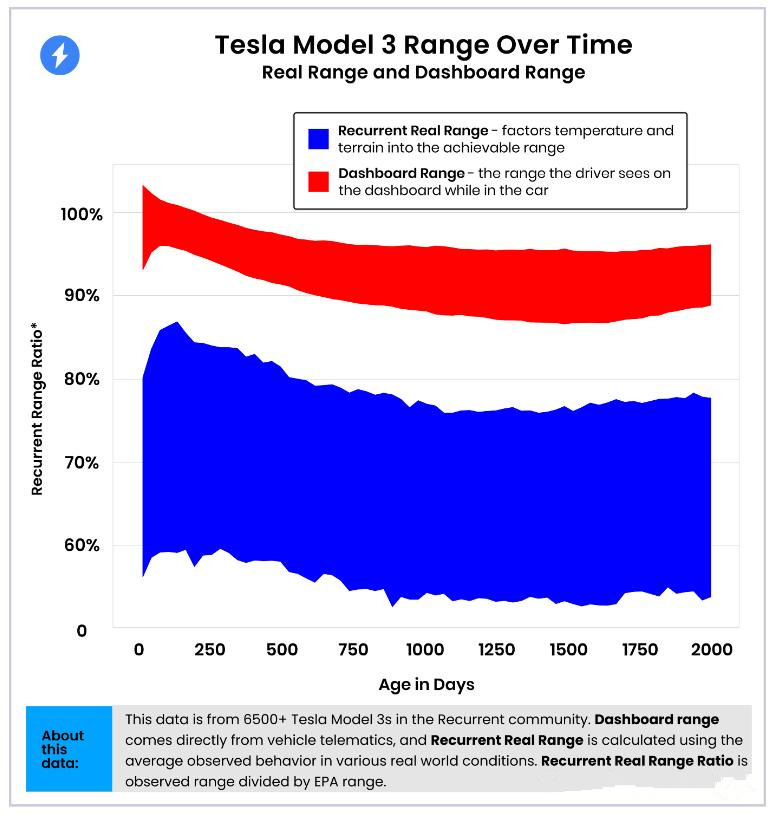
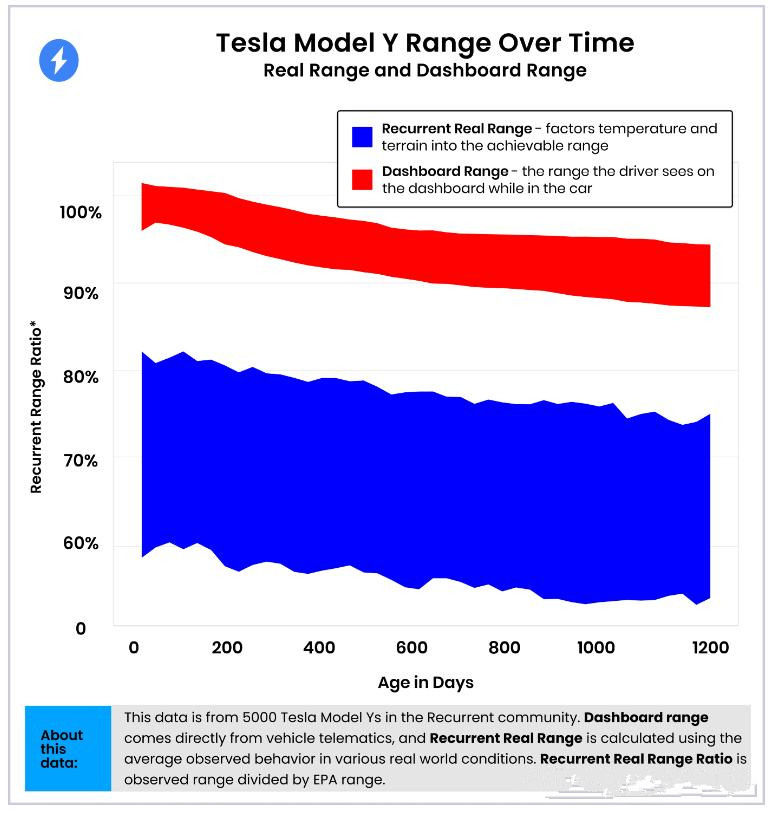
So, should you charge quickly without any worries?
Keep in mind that the vehicles we are observing are relatively young, and we don't know how these fast-charging batteries will continue to age. If you plan to use an electric vehicle for the long term, you may still want to save high-voltage charging for road trips. Any other good ideas? Try to avoid fast charging when your car's battery is very hot, very cold, or in an extreme state of charge (e.g. 5% or 90%). All of these situations can place additional stress on the battery and BMS.
|
Misunderstanding |
Fact |
|
Fast charging from 0 to 100% is usually possible. |
Almost all electric vehicles have software that can limit the speed of fast charging for more than 80% of the charge. A Level 2 charger is usually recommended for the last 20% of the charge, as it can be just as fast, or even faster. Level 2 chargers, even public chargers, are usually cheaper. |
|
The kilowatt (kW) rating of a fast charger controls the charging speed of an electric vehicle. |
In every different EV model, software and battery limitations govern how fast the car can be charged, depending on temperature, state of charge and even battery life. |
|
Any amount of fast charging can cause permanent damage to the battery. |
It is still difficult to accurately quantify the long-term effects of regular fast charging on battery health (5, 10, 20 years), but small-dose charging is fine. |
|
Fast charging at low temperatures can lead to lithium evolution. |
Electric vehicle batteries have a lot of software and hardware to protect them and ensure they are at the right temperature before receiving high voltage to avoid lithium precipitation. |
------------------------------------------------------------------------------------------------------------------------------------------------------------------------------------------------------------------------------------------------



